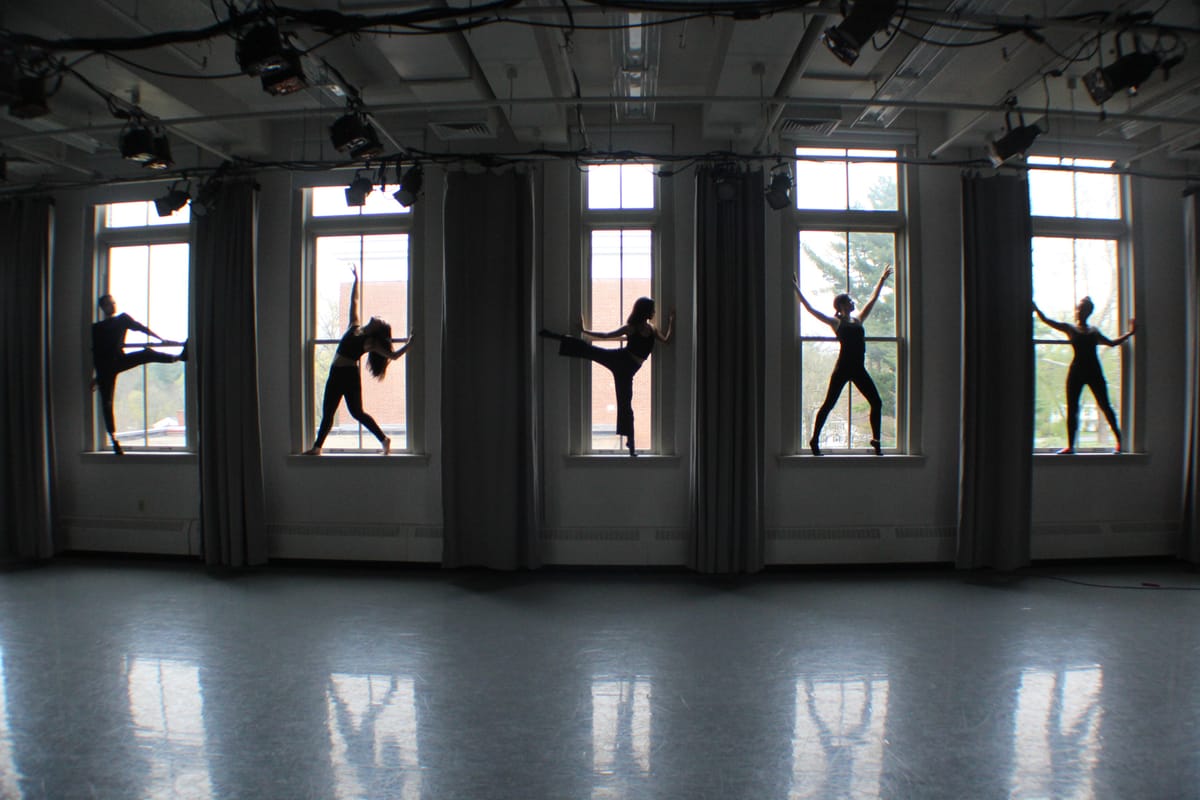Seeing Double: Auditions, To Do or Not To Do?
Seeing Double columnist Cole Graber-Mitchell ’22 considers how to balance equity with beauty and access with skill in an article inspired by recent AAS rulings on auditions and funding.

A couple of weeks ago, Intersections Dance Company — a student-run dance organization — approached the Association of Amherst Students (AAS) and asked for funding for its fall dance performance. The Budgetary Committee (BC) denied the request since Intersections requires members to audition before they can dance with the group. The AAS has a strong prohibition against funding events that can only benefit a particular segment of the student body, and those against funding the performance argued that it did just that by only allowing people who had passed auditions to perform.
Those opposed to the request identified a compelling contradiction between auditions and equity. By their very nature, auditions differentiate people. Auditions aim to separate the best from the rest, and they are extremely common among arts groups on campus: the a cappella groups, Green Room, DASAC, Symphony Orchestra, Choral Society, and Intersections all use them to determine who can participate. They’re also common in the broader world, where tryouts and auditions determine who can join sports teams and arts groups.
The discussion at the AAS got me thinking: how do we justify auditions in an equitable society? I disagreed with the BC’s decision, an argument that I’m not going to relitigate now. (The rest of AAS almost unanimously endorsed the BC’s view.) But I do believe that auditions and a commitment to equity are not inherently contradictory.
Sometimes, selection is necessary for certain art forms to flourish. Take theater. A play only has a given number of roles, so directors hold auditions to select the best people for those parts. Often, many more people audition than there are roles available, so most people end up with diddly-squat. The same is true for dance, where a piece might be choreographed for only a few dancers.
There are ways of doing theater and dance that eschew selection in favor of allowing more people to participate — I was in my high school’s production of “Rent” solely because we cast 50 people instead of the script’s designated 15 or so. But it is true that the art itself can call for cutting down. There are shows that can only be done with three people, no more and no less. And those shows are beautiful, fun, and worthwhile.
However, the fact that some art needs to select participants doesn’t mean it needs auditions. If we wanted to be equitable, why wouldn’t we just employ a lottery or rotation system? To me, that’s actually an attractive model in some situations. I can imagine art groups dedicated to education and beginner theater rotating between actors to ensure that everyone who wants to participate is able.
But it’s also true that such a system would rarely produce excellence. Can you imagine Broadway if they did that? You’d have schlubs like me on stage making a mockery of the show’s script. Auditions are a tool that we use to promote and celebrate great art, and they should coexist alongside other tools that allow everyone to participate.
In an equitable society, not everyone will be equal in talent, and that’s okay. Dealing with people fairly does not mean pretending that my drawings are masterpieces or that my co-columnist’s shower rendition of Stars from “Les Misérables” deserves a Tony. And the college’s devotion to diversity, equity, and inclusion does not mean that anyone can put their art in the Mead.
Of course, a commitment to equity does include eliminating unfair bias from auditions. No matter how they’re structured, auditions discriminate between people, selecting some and rejecting others. And they can do this in unfair ways by discriminating on the basis of characteristics, like race and gender, that we deem unacceptable. For example, once professional orchestras began putting a screen between juries and auditioning performers, the number of women in professional orchestras shot up. And groups like the Guerilla Girls fight against sexism and racism in curated galleries and point out how curators more often display works by white men.
Any equitable society worth living in has a strong and inclusive art culture, because art is part of what makes life wonderful. Everyone should be able to do art: art education and materials should be available to all, and we should encourage even those with no experience to act, dance, and sing. However, we also need a chance to celebrate excellence and enjoy beauty and skill. There should be dance and theater companies that select the cream of the crop (in a fair fashion) to perform awe-inspiring works, and I should be able to perform with my community choir one day and attend a virtuoso’s concert the next.
In his short story “Harrison Bergeron,” Kurt Vonnegut describes a dystopian world in which everyone is made to be the same regardless of their talents. The beautiful wear prosthetics to make them ugly, the smart are given devices to disrupt their thinking, and the strong wear weights. The ballerinas are graceless and the musicians cannot play.
I’m deeply committed to the pursuit of equity and I have strong misgivings about meritocracy — the idea that some people should have more power or wealth on the basis of “merit.” But I also believe that my progressive politics do not require me to deem all people equally talented or reject auditions outright. The world of “Harrison Bergeron” — bereft of joy and excellence — cannot be the end of our struggles for equity and justice.


Comments ()